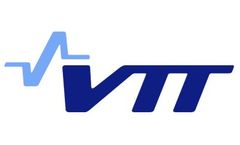Drug Dose Articles & Analysis
14 articles found
This phase assesses the pharmacodynamics (how the drug affects an organism) and pharmacokinetics (how the organism affects the drug). ...
The services tend to accelerate the discovery and optimization of molecule drugs with a strict quality control system. Small molecule drugs are characterized by their low molecular weight and simple chemical structures. These properties confer several advantages, including the ability to easily pass through cell membranes and the predictability of manufacturing, ...
By encapsulating drugs within these microspheres, pharmaceutical companies are able to improve patient compliance, reduce dosing frequency, and enhance therapeutic outcomes. ...
In order to more effectively deliver chemotherapy drugs, Small Molecule Drug Conjugates (SMDC), Antibody Drug Conjugates (ADC), and Degradation Antibody Conjugates (DAC) have been successively explored and developed, enhancing the therapeutic index while providing selective delivery. ...
One critical element in the drug development process is drug metabolism and pharmacokinetics (DMPK), which refers to how a drug is absorbed, distributed, metabolized, and excreted (ADME) from the body. ...
In addition to traditional small molecule compounds, new types of payloads such as PROTACs and light-activated molecules have also been selected as payloads.New Strategies for ADC PayloadsADC with PROTAC Molecules as PayloadA major challenge in ADC development is dose-limiting toxicity (DLT), which demonstrates the difficulty in balancing the efficacy of drug ...
One critical element in the drug development process is drug metabolism and pharmacokinetics (DMPK), which refers to how a drug is absorbed, distributed, metabolized, and excreted (ADME) from the body. ...
The controlled release of drugs from microspheres provides sustained drug delivery, ensuring a prolonged therapeutic effect and reducing dosing frequency. This enables convenient administration and avoids potential side effects caused by frequent dosing. Furthermore, drug microspheres protect sensitive ...
Drug Efficacy and Safety Assessments: Animal models play a pivotal role in evaluating drug efficacy and safety profiles. ...
Atrial Fibrillation (AF) is often described as an irregularly irregular rhythm. AF is an arrhythmia with no consistent ventricular response or pattern due to its somewhat random and chaotic discharging of atrial impulses firing disconnectedly from multiple foci. This continuous and erratic behavior results in a ventricular response that changes from beat to beat. AF will typically present with a ...
Laboratories must measure impurities based on a J value for each drug product; drug products may be oral, parenteral (ex. intravenous, injection), or inhalation types. The J value of the drug is calculated based on an established permissible daily exposure (PDE), maximum daily dose of the drug (MDD), and the ...
The research summarized in this whitepaper provides a number of examples of how ALZET® pumps offer a superior pre-clinical drug dosing option for the delivery of a wide array of anti-cancer agents, including small molecules, immunotherapies, radiotherapies, combination treatments, and novel drug entities. ...
Various drug delivery systems have been developed to simplify their regimental drug therapy. However, more effective and innovative drug delivery technologies are required to increase patient compliance and provide controlled drug delivery. This review article attempts to provide a concise incursion into the use of fixed ...
Cost-efficiency through avoiding extra dosing of expensive drugs. Learning to better understand the cause-and-effect relations of drug dosing. ...










